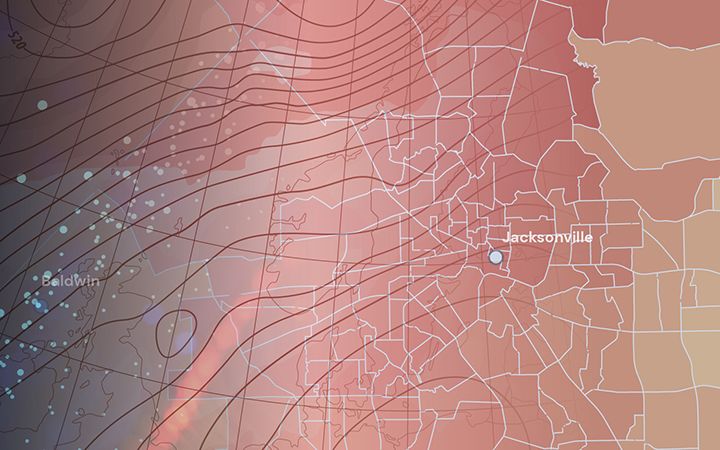A critical moment: Protecting Justice40 communities from extreme heat
The extreme heat of climate change threatens more than weather. The consequences will be felt in emergency rooms, on electrical grids, and inside homes. As extreme heat poses risks to human health and energy reliability, no one will face those risks more acutely than Justice40 communities. These communities—which have experienced high exposure to pollutants and inadequate funds for infrastructure—will require support to prepare, withstand, and overcome the effects of rising temperatures.
This is a critical time to act. The Bipartisan Infrastructure Law (BIL) and the Inflation Reduction Act (IRA) include record amounts of funding to address climate change, and the federal government’s Justice40 Initiative set a goal that 40% of the benefits of climate investments flow to disadvantaged communities. The next step is to determine how—and where—to invest those funds most effectively in these Justice40 communities.
The new report by the ICF Climate Center outlines five approaches that can help organizations harness data to create plans and access funding to help these communities face a hotter world.
How rising heat may affect human health and energy reliability
The threat to human health
Exposure to extreme heat results in more emergency room visits, more hospital admissions, and more deaths. The number of days when heat rises to health-threatening levels will likely surge across the country. By 2050, in a high-emissions scenario, Justice40 communities could see an additional 54 million people who face heat so severe that it could threaten their health.
The implications of this analysis can also be viewed at a local level, where actions to reduce the impacts of extreme heat are often implemented. For example, the Jacksonville, Florida, metropolitan area is projected to potentially be exposed to a high number of health-threatening heat days in both moderate- and high-emissions scenarios.
Of the 1.36 million people in the Jacksonville area, 24% live in Justice40 communities.
Residents in the Jacksonville area historically experienced relatively few health-threatening heat days each year. However, by 2050 most marginalized communities in the area should expect to see 60 to 70 health-threatening heat days per year in a moderate-emissions scenario, which rises to 70-plus days for most of the region in a high-emissions scenario.
The threat to energy reliability
As more people use air conditioning to seek relief from extreme heat, the surge in demand will strain the energy system, which was not designed to operate during these conditions. This will threaten reliable access to essential services, such as medical equipment and cooling centers. Even critical infrastructure, like transformers, could face compromised performance during these times.
Why Justice40 communities face greater risk
Greater exposure
Higher sensitivity
Lower adaptive capacity
ClimateSight data forecasts risks and points to solutions
ICF Climate Center has issued a new report that leverages ClimateSight, our climate risk analytics platform, to assess how extreme heat will affect human health and energy reliability on a community level. Our experts use these numbers to forecast risk and offer insights on data-based mitigation strategies.
We have the forecasts. We have the funding. Now is the time to create targeted plans for the communities that most need them.

Learn. Assess. Prepare. Our 2024 report harnesses ClimateSight data and the expertise of ICF Climate Center experts to offer projections and insights that empower organizations to create targeted plans to protect Justice40 communities.
